If you’re a high school government teacher, you might be wondering how to teach your students about the first amendment. By now, your students already know that the first amendment grants people the freedom of speech, press, assembly, and freedom to practice religion. So what now? Well, a great place to start is by teaching your students about first amendment landmark supreme court cases.
Landmark cases are important because they set precedents on how the government applies the rights and freedoms of citizens.
In this post, I’ll briefly summarize 7 landmark cases that you can go over with our students. If you’re interested, I created a First Amendment Landmark Supreme Court Cases resource for purchase. This resource includes a case summary, the constitutional question involved for each case, the Supreme Court decision, and student friendly handouts for 7 first amendment landmark cases. If not, no worries. Continue reading below for summaries of the landmark cases.
Supreme Court Case 1: Schenck v. United States (1919)
In 1917, Charles Schenck and Elizabeth Baer created leaflets to urge people not to be drafted into the military. The Espionage Act was passed that year that made it a crime to interfere with foreign relations, military recruitment and operations during wartime. Charles Schenck and Elizabeth Baer were convicted of violating the Espionage Act.
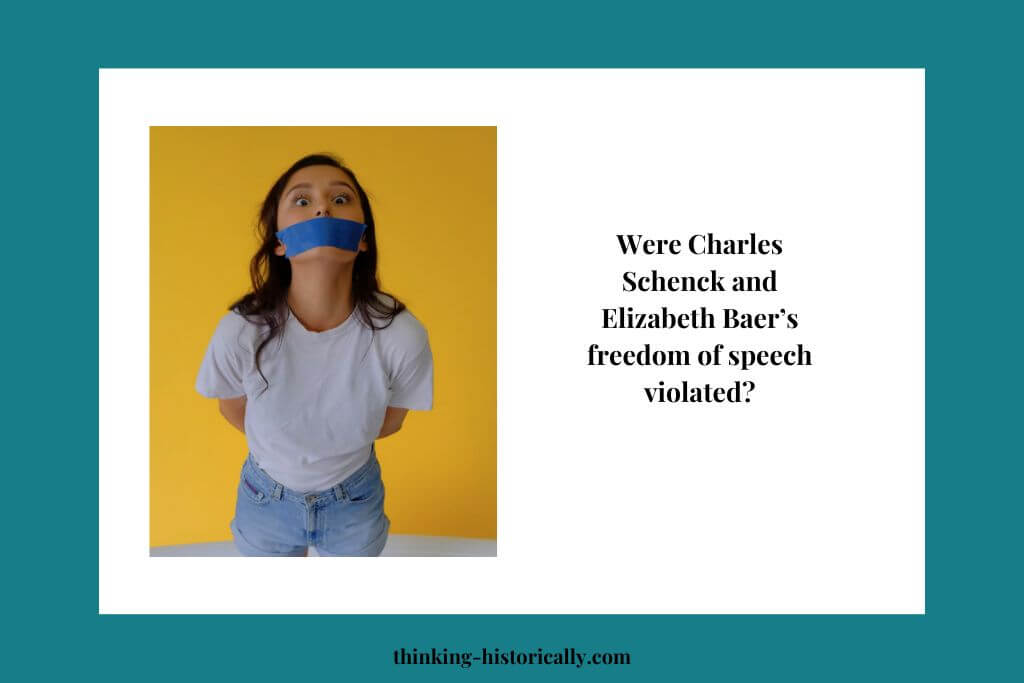
Constitutional question:
Were Charles Schenck and Elizabeth Baer’s freedom of speech violated?
Supreme Court Case 2: Chaplinsky v. New Hampshire (1942)
Walter Chaplinsky was a Jehovah Witness. One day in Rochester, New Hampshire he passed out flyers about his religion. People passing by claimed that Chaplinksy was denouncing other religions and complained to the Town Marshal. The Town Marshal said that Chaplinsky had a right to share his opinions. Shortly after a fight broke out and Chaplinskhy was arrested. As he was being arrested he called the Town Marshal a “fascist” and “racketeer.” He was convicted of violating a New Hampshire law that prohibits offensive language towards people who are lawfully in public areas.
Constitutional question:
Was Chaplinky’s first amendment violated when he was convicted?
Supreme Court Case 3: New York Times v. Sullivan (1964)
During the Civil Rights Movement, the New York Times printed a full page newspaper advertisement that supported Martin Luther King and other civil rights leaders. The ad also discussed police brutality against peaceful demonstrators. Although the advertisement did not mention any names, L.B. Sullivan, an individual in charge of police officers, felt like he was being targeted by the advertisement and felt like his reputation was negatively impacted. Because of this, he sued the New York Times for libel at an Alabama court and was given $500,000 in damages.
Constitutional question:
Did the Alabama court decision violate freedom of speech and freedom of press?
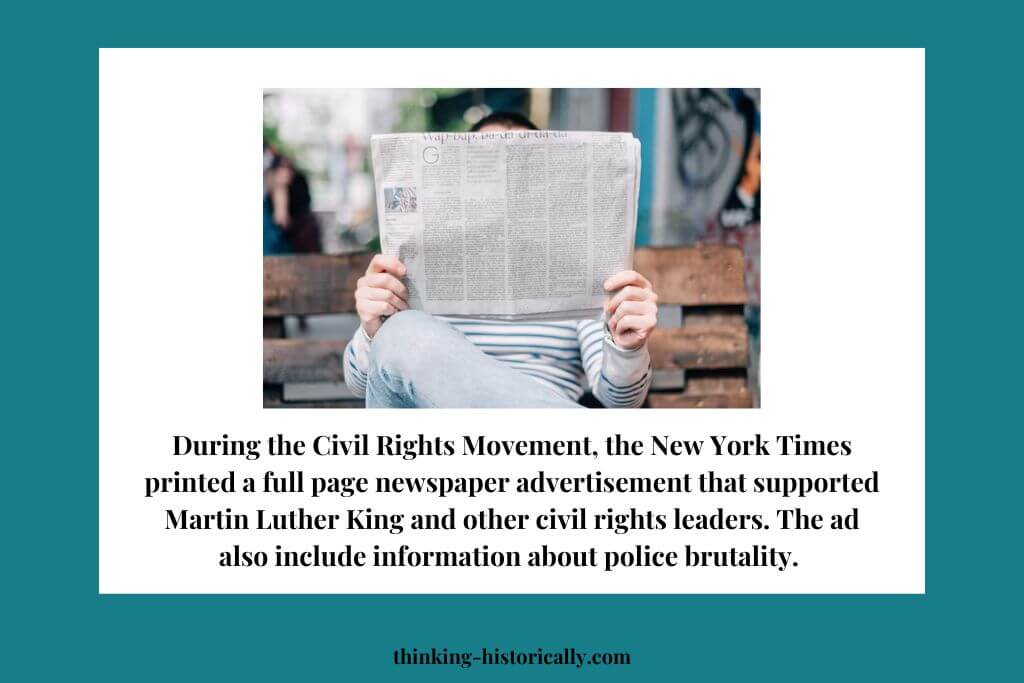
Supreme Court Case 4: Tinker v. Des Moines (1969)
In December of 1965, a few students in Des Moines decided to wear black armbands to protest the Vietnam War. School officials heard about this plan and created a school policy that banned wearing black armbands. Marybeth Tinker and Christopher Eckhardt were sent home when they came to school wearing armbands. John Tinker was also sent home after coming to school with a black armband.
Constitutional question:
Did the school policy to ban black armbands violate the First Amendment’s freedom of speech?
Supreme Court Case 5: Miller v. California (1973)
Marvin Miller mass mailed sexually explicit brochures in California. His brochures advertised books on topics about orgies, martial intercourse, and pornography. Many people who got his brochure complained to the police. He was convicted of violating California law that prohibited the distribution of obscene material.
Constitutional question:
Were Miller’s freedom of speech and press violated when he was convicted?
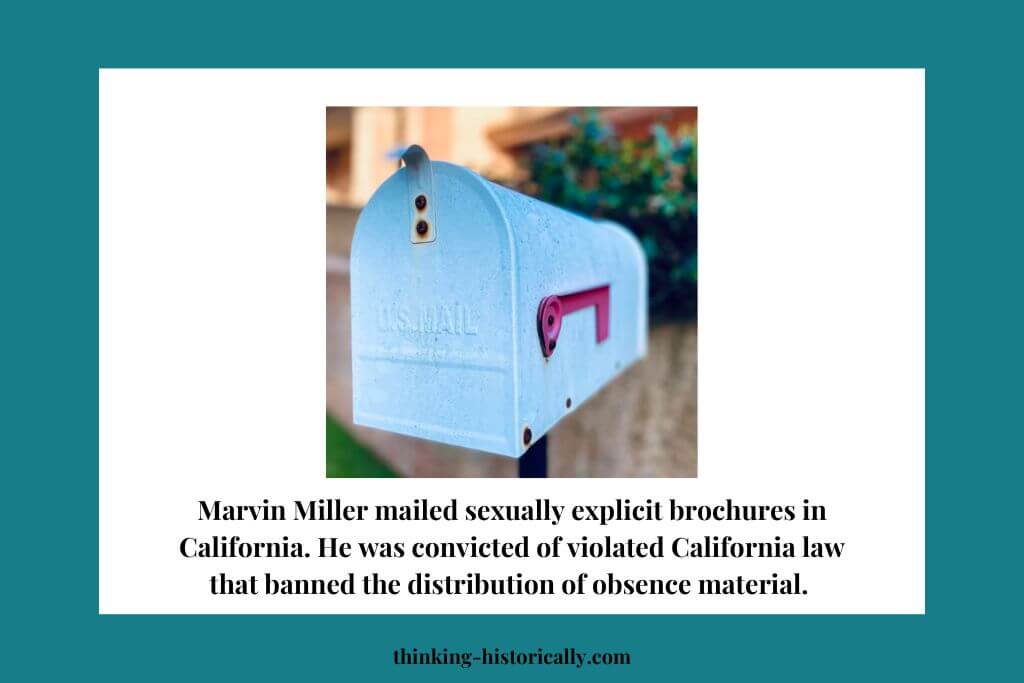
Supreme Court Case 6: Texas v. Johnson (1989)
In 1984, Gregory Less Johnson burned an American flag to protest the Reagan Administration. Burning a flag violated Texas law. Johnson was sentenced to jail and fined $2,000.
Constitutional question:
Does burning an American flag violate the first amendment’s freedom of speech and expression?
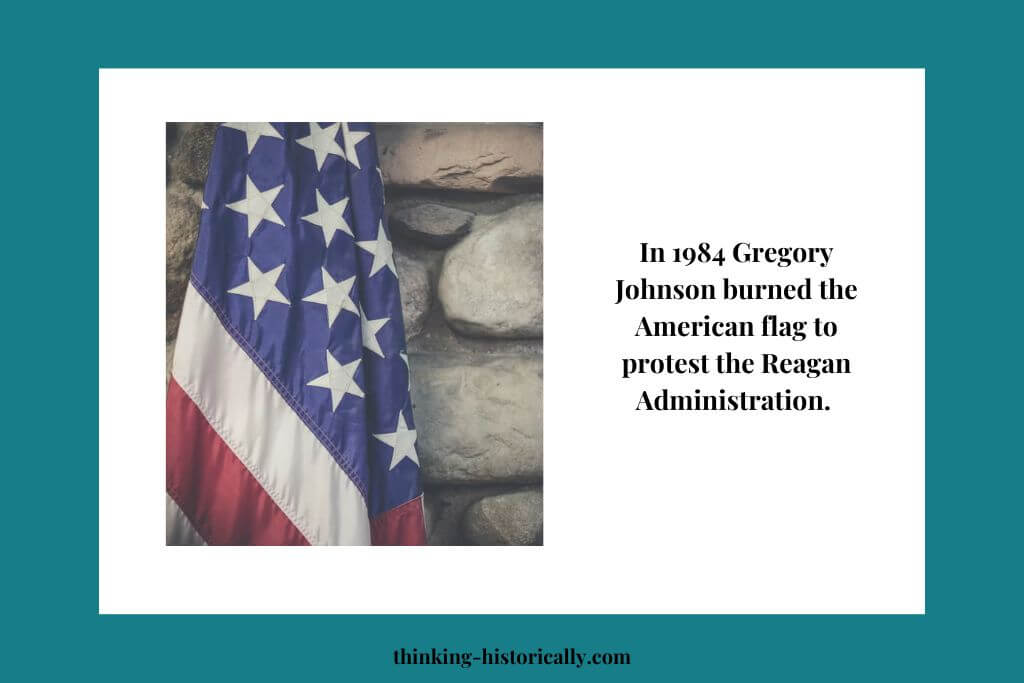
Supreme Court Case 7: Reno v. ACLU (1997)
In 1996, the Communications Decency Act (CDA) was created to protect minors from “indecent” or “patently offensive” material over the internet. This act made it illegal to send people under 18 indecent material through the internet. Attorney General Janet Reno appealed to the Supreme Court on whether this act was constitutional.
Constitutional question:
Did the Communication Decency Act violate the First Amendment freedom of speech?
Teaching Idea
After going over the case background fact, a good activity to do with students is to ask them whether or not they think these cases violated the First Amendment. Have students discuss amongst themselves before opening it up as a whole class discussion.
Then, go over the actual Supreme Court decision and hold a discussion with students about whether or not they agree with the Supreme Court’s decision.
These 7 Supreme Court landmark cases are a great place to start if you’re teaching your students about the First Amendment. If you’re interested, you can purchase the First Amendment Landmark Supreme Court Cases resource.
Also, check out my Service Learning Project post if you’re looking for a service learning project for your seniors!
Happy teaching!
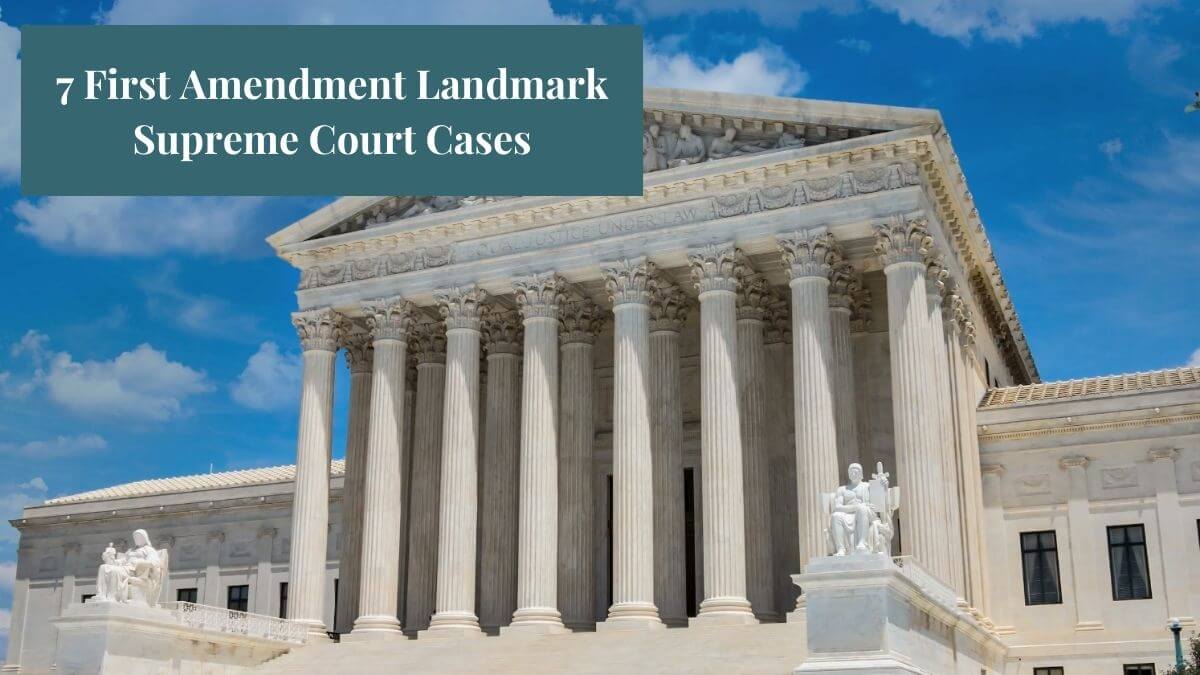


One Response